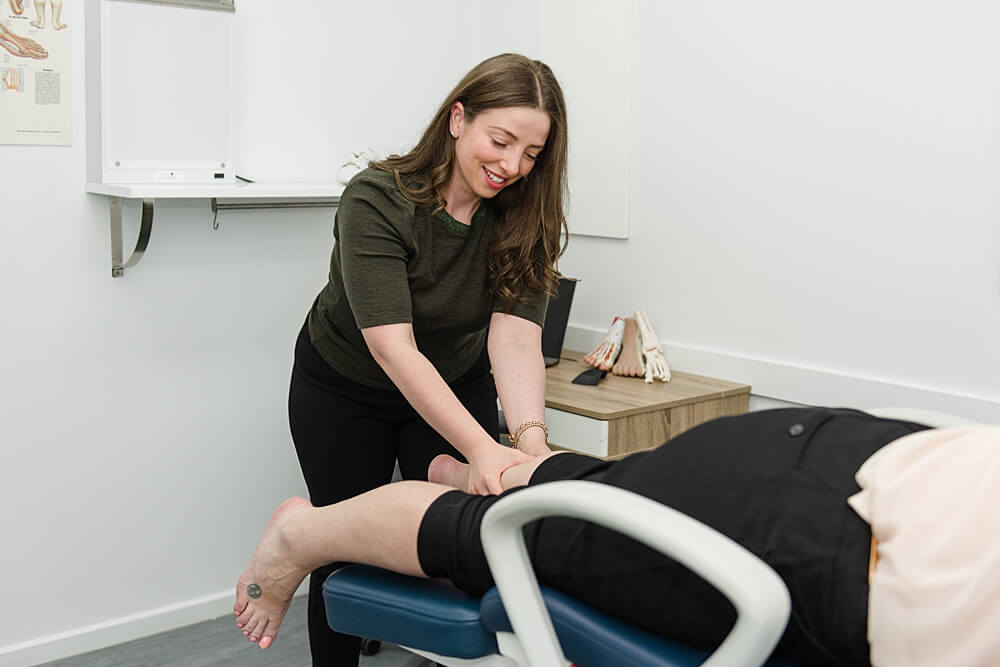Navicular stress fractures are a common injury, particularly among athletes and individuals who engage in high-impact activities. This type of fracture occurs in the navicular bone, a small bone located in the midfoot. While it may seem minor, navicular stress fractures can be debilitating if not properly managed. This blog will delve into the causes, symptoms, diagnosis, and treatment options for navicular stress fractures to help you better understand this condition.
Treatment for navicular stress fractures is crucial in the management of foot injuries, especially for athletes involved in sports like running. The navicular bone is one of the most common sites for stress fractures in the foot and can be cited as a source of persistent pain and discomfort. Understanding the biomechanics of this area is essential to diagnose and treat these types of injuries effectively. Navicular stress fractures are often caused by overuse or repetitive impact on the midfoot during activities such as running. If left untreated, these fractures can lead to chronic pain and potentially debilitating symptoms that may hinder an athlete’s performance. Diagnosis of a navicular stress fracture typically involves imaging studies such as X-rays or MRI scans to confirm the presence of a fracture. Once diagnosed, treatment options may include rest, immobilization with a cast or boot, physical therapy, and possibly injections to aid in healing. It is important to note that prompt diagnosis and appropriate treatment are crucial for successful healing after a navicular stress fracture. Athletes should seek medical attention if they experience persistent pain in their midfoot region after engaging in sports activities. In conclusion, understanding the anatomy and biomechanics of the foot is vital when it comes to managing common injuries such as navicular stress fractures. By recognizing symptoms early on and seeking proper treatment, athletes can ensure optimal recovery from this type of injury.
Causes
Navicular stress fractures often result from repetitive stress or overuse of the foot, which can weaken the bone over time. Several factors can contribute to the development of these fractures:
- Overtraining: Athletes who engage in high-intensity sports like running, basketball, or gymnastics are at a higher risk due to the constant impact on their feet.
- Improper footwear: Wearing shoes that don’t provide adequate support or cushioning can increase the risk of stress fractures.
- Abnormal foot structure: Individuals with flat feet, high arches, or other structural abnormalities may be more susceptible.
- Sudden increase in activity: A rapid escalation of exercise intensity or duration can strain the navicular bone.
- Poor biomechanics: Inefficient running or walking mechanics can put extra stress on the navicular bone.
Symptoms
Identifying the symptoms of a navicular stress fracture is crucial for early diagnosis and treatment. Common signs and symptoms include:
- Gradual onset of pain: Initially, you may experience mild discomfort that worsens with activity.
- Tenderness: The top of the midfoot, specifically over the navicular bone, may be tender to the touch.
- Swelling: Localized swelling in the midfoot area can occur.
- Pain with weight-bearing activities: Walking or running can exacerbate the pain, and you might notice a limp.
- Pain in bed and when not weight-bearing: Night pain is a high indication that there is damage and stress on the navicular bone.
- Decreased range of motion: Limited movement of the ankle and foot due to pain and inflammation.
Diagnosis
If you suspect a navicular stress fracture, it’s essential to seek medical attention. At Highett Podiatry our podiatrists will perform a thorough examination, which may include:
- Medical history: Discuss your physical activity, footwear, and previous injuries.
- Physical examination: Palpating the affected area and evaluating your gait and foot mechanics.
- Imaging tests: X-rays may not always reveal the fracture initially, so a bone scan, MRI, or CT scan may be necessary for a more accurate diagnosis.
(our podiatrists can refer you for your the appropriate scans)
Treatment
The treatment approach for navicular stress fractures typically involves a combination of rest, immobilization, and rehabilitation. Here’s what you can expect:
- Rest and Immobilization: The primary goal is to allow the bone to heal. You may need to wear a cast, moon boot, or brace to restrict movement and protect the injured area.
- Activity modification: Avoid high-impact activities and gradually reintroduce weight-bearing exercises under medical supervision.
- Physical therapy: Our podiatrists can prescribe you a program that can help you regain strength, flexibility, and proper biomechanics to prevent future injuries.
- Orthotics: Custom-made or over-the-counter orthotic inserts can provide better support and reduce strain on the foot.
- Pain management: Over-the-counter pain relievers or prescribed medications may be recommended to manage pain and inflammation. Our endorsed podiatrists at Highett Podiatry are qualified to prescribe the appropriate medications.
- Surgical intervention: In severe cases where non-surgical methods are ineffective, surgery to stabilize the bone may be necessary.
Prevention
Preventing navicular stress fractures involves proactive measures:
- Proper footwear: Choose shoes that offer good support, and structure, with the appropriate amount of cushioning, especially for high-impact activities. Please consult with our podiatrists who can advise on the best shoe for your foot type and activity.
- Gradual progression: Increase your exercise intensity and duration slowly to allow your body to adapt. Follow your podiatrists “return to activity” program that can be individually prescribed to your needs.
- Biomechanical evaluation: Consider a gait analysis to identify and correct any abnormal foot mechanics. Correcting biomechanical issues can be achieved by gait retraining and orthotics, in which both, your podiatrist can assess and prescribe.
- Cross-training: Incorporate low-impact activities like swimming or cycling to reduce the strain on your feet.
- Regular rest: Allow sufficient time for your body to recover between intense workouts.
Conclusion
Navicular stress fractures can be painful and require careful management to ensure proper healing. If you experience any symptoms or suspect an injury, consult us at Highett Podiatry, promptly. With the right diagnosis and treatment, most individuals can recover fully and return to their active lifestyles, armed with knowledge to prevent future occurrences. Remember that listening to your body and making wise choices in terms of footwear and exercise progression are key factors in reducing the risk of navicular stress fractures.
Ignoring your symptoms and pain, rarely works in resolving your injury issues and getting on to these things earlier rather than later, usually equals a quicker injury resolution and a more successful outcome.

